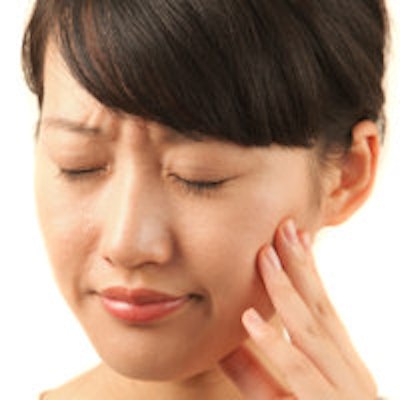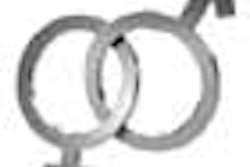
Female patients have a greater risk of developing dry socket after tooth extraction, according to a new Journal of the American Dental Association study. The risk was even higher for women taking hormonal birth control, the researchers found.
Dry socket, also known as alveolar osteitis (AO), occurs after tooth extraction when a blood clot doesn't form or only partially forms in a socket. Although it's not fully understood why one person develops the condition but another heals normally, the JADA analysis suggests estrogen may be a factor (JADA, June 2016, Vol. 147:6, pp. 394-404).
"In this meta-analysis, we considered a risk assessment and sensitivity analysis of AO in [oral contraceptive (OC)] users to provide a perspective across studies," the authors wrote. "The outcome indicated that females have a greater susceptibility to AO."
Is there a link between estrogen and dry socket?
Despite the fact that dry socket is one of the most common complications following exodontia, the role of estrogen-related hormones in the occurrence of alveolar osteitis is unclear. Study authors Diane Bienek, PhD, from the ADA Foundation and James Filliben, PhD, from the National Institute of Standards and Technology wanted to see if there was a correlation between hormonal birth control use and a higher risk for developing the condition.
“The outcome indicated that females have a greater susceptibility to AO.”
"In 2015, investigators in a meta-analysis determined the risk ratio of oral contraceptive use on the incidence of AO in females with impacted mandibular third molars to be 1.8 greater than the control participants," they wrote. "Because OC users are reported to have notably higher risk, there is strong merit in analyzing other factors in this population."
Bienek and Filliben found 29 articles -- yielding 40 total studies -- that analyzed the potential effect of hormonal contraceptives with estrogen on the risk of developing dry socket. In their analysis, they compared dry socket rates for women who used hormonal contraceptives with rates in women who did not use hormonal contraceptives. They also looked at AO rates for the following:
- All females
- All males
- All participants who smoked
- All participants who did not smoke
Women who used birth control developed alveolar osteitis 13.9% of the time, whereas women who didn't take hormonal contraceptives developed dry socket 7.5% of the time, the researchers found. However, all women developed dry socket more often than men.

"When the risk in males was compared with that in females not using OCs, the risk ratio decreased to 1.2," the authors wrote. "Notwithstanding, females retained a [significantly] higher AO rate."
While a higher percentage of women using birth control developed dry socket than people who smoked, the researchers pointed out that, after a sensitivity analysis, smoking had a larger effect on developing the condition than using a hormonal contraceptive.
"Regarding the magnitude of the effect between paired comparisons, OC use and smoking still dominated, but in reverse order," Bienek and Filliben wrote. "Smoking had the largest effect (9.8%), followed by OC use (7.6%)."
Researchers need to record more details
One of the main challenges for the researchers was that studies often didn't record the type of birth control and amount of estrogen the participants were taking. The researchers noted that this was a problem because contraception can vary by route, type, and dose.
"Although investigators in several studies associate OC use with increased AO risk, few authors report the dose, which is especially important as the OC pill formulations continue to evolve," the authors explained. "Over time, the dose of the estrogen component of OC pills was decreased to 50 micrograms and then to 20 to 35 micrograms. The newer generation contains as little as 15 micrograms."
Bienek and Filliben hope future studies take into account the various types and dosages of hormonal birth control, and also track whether or not the women are menstruating, since most hormonal birth control packs contain a week without any active pills.
"Among females, OC use increases the average risk of AO occurrence by nearly twofold," they concluded. "Further study is needed to characterize participants for the route, type, and dose of hormone contraceptive or therapy being used at the time of exodontia."



















